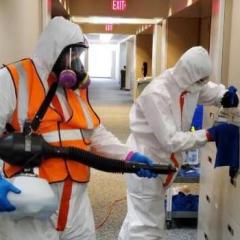All Activity
- Today
-
Behind the £10 Dress: Unveiling Shein’s Factory Realities
Sanjo replied to euronews's topic in Green Talk
Shein is trash and so are their clothes. Avoid them! -
Elon Musk made a Nazi salute at the Trump inauguration ceremony
Sanjo replied to Simon's topic in Politics and Current Events
What gets me furious is that everyone at the event and media just seem to think this is fine and normal wtf he did a Nazi salute! He is a Nazi! And they all still applaud him and brush it off like it's nothing- 1 reply
-
- elon musk
- donald trump
- (and 9 more)
-
Plant-based alternatives are better than meat, new study concludes
Sanjo replied to Simon's topic in Good Food
Meat doesn't taste good when you know it's coming from murdered animals that have lived a horrible life. But hey we are all different and have different tastes!- 6 replies
-
- vegan
- vegetarian
- (and 4 more)
-
 versatilecleaning joined the community
versatilecleaning joined the community -
Hello @Long John Whiskers and @Zarahs, welcome to the Green Blog community!
-
 fsbsoklahomacity changed their profile photo
fsbsoklahomacity changed their profile photo -
 fsbsoklahomacity joined the community
fsbsoklahomacity joined the community -
fivestarrichmond joined the community
- Yesterday
-

Why it’s better for the environment to eat less meat
Zarahs commented on Happy Jolene's blog entry in Easy Green Life Tips
Thank you so much for this awesome blog post! I'm on a journey to go fully vegan, and even though it's challenging, I'm determined to make it happen. Your post is such an inspiration!- 2 comments
-
- enviroment
- vegan
-
(and 5 more)
Tagged with:
-
Every step we take to reduce plastic use and waste is a win for our planet! Even if the alternatives might not always match the quality of plastic, the impact we're making is worth it. Keep up the fantastic work, everyone!
-
Hey everyone! I absolutely love this forum - it's such a great place to connect and share ideas! It's just a bit challenging to draw new members in when the big social media sites grab their attention so easily. But hey, let's keep the positive vibes flowing and make this community shine even brighter!
-
Hi all!
-
 Zarahs joined the community
Zarahs joined the community -
 Heart Medical changed their profile photo
Heart Medical changed their profile photo -
 Heart Medical joined the community
Heart Medical joined the community -
Simon started following Are you hopeful for 2025? , Elon Musk made a Nazi salute at the Trump inauguration ceremony and Michael from Denmark
-

Elon Musk made a Nazi salute at the Trump inauguration ceremony
Simon posted a topic in Politics and Current Events
During the inauguration ceremony for Donald Trump in Washington D.C. earlier this week, the billionaire Elon Musk gave a Nazi salute while thanking the crowd for their support. Yes, a Nazi salute. And he did it twice! Elon Musk is not just a crazed supporter of Donald Trump. Elon Musk spent more than a quarter-billion dollars to elect Trump, and he is an essential part of the Trump presidential administration as he will lead the new "Department of Government Efficiency". His role is so central to the administration that he will probably get a West Wing office so that he has even closer access to President Trump. Mainstream-media, right-wing pundits and other fascists and low-lifers were quick to downplay his Nazi salute. Some tried to brush it over and claimed that all he did was a "Roman salute. No, there's no such thing as a "Roman salute". It was made up by fascists in Italy and then copied by the Nazi regime. Only fascists use it. Others blamed his apparent Nazi gesture on Elon Musk being autistic, I mean seriously. Benjamin Netanyahu has come out in support of Elon Musk. But no surprise there really, Netanyahu is a wanted war criminal who is directly responsible for crimes against humanity. Even the Anti-Defamation League (ADL) came to the defence of Elon Musk and called it "an awkward gesture in a moment of enthusiasm"... Give me a break. We all know that the ADL is basically a Zionist organization that claims that they are against all forms of antisemitism. But their definition of antisemitism typically seems to only include support for Palestine and not supporting Israel's genocide in Gaza and their illegal occupation of Palestine. Still, ADL defending such obvious examples of antisemitism is unusual, but it's likely a calculated move to not distance their organization from President Trump and his administration. So do you guys remember back in 2023 when Greta Thunberg was labelled an antisemite for simply holding a cute, blue octopus doll on a photo while calling for an end to an ongoing genocide? But Elon Musk, the richest man alive, can do a full on Nazi salute - twice, for crying out loud! And the media and establishment is just like "meh, who knows, that gesture is probably nothing, whatever". And that's despite his long and documented history of repeatedly flirting with the far right. I mean, just the other day, Elon Musk spoke at an ADF-meeting in Germany (for those who are unaware: ADF has deep connections to neo-Nazis). It's funny (read horrible) to see how this all works nowadays, it's almost like accusations of antisemitism have been weaponised to silence those who speak up against the rich and powerful and their interests.- 1 reply
-
- elon musk
- donald trump
- (and 9 more)
-
fivestargrandblanc joined the community
- Last week
-
gohamo6984 joined the community
-
 softekgames changed their profile photo
softekgames changed their profile photo -
 Themailerbox changed their profile photo
Themailerbox changed their profile photo -
-removebg-preview(1).thumb.jpg.b02bc63d74e95dfba30550427436f4e0.jpg) Maid Corner changed their profile photo
Maid Corner changed their profile photo -
 biooneofpascocounty changed their profile photo
biooneofpascocounty changed their profile photo -
.thumb.png.f366f880e987f0d5c50aaf9bbab6228c.png) simpliaxis123 changed their profile photo
simpliaxis123 changed their profile photo -
I'm not so sure the pieces could stick together so easily if they were made out of wood instead of plastic — but I'm no Lego expert, so I could be wrong!
-
 Simon reacted to a post in a topic:
Lego set to phase out oil in its bricks
Simon reacted to a post in a topic:
Lego set to phase out oil in its bricks
-

Plant-based alternatives are better than meat, new study concludes
Simon replied to Simon's topic in Good Food
I agree, @Long John Whiskers, taste is usually not the problem. I think the hardest part is to make the texture feel right — or similar enough to the real thing. Often the plant-based alternative feel a bit dryer too, probably because they lack the fats. Plant-based sausages and ham are really difficult to get right, I think. But it's been so long now since I tasted "the real thing", that you probably shouldn't put much weight on my taste.- 6 replies
-
- vegan
- vegetarian
- (and 4 more)
- Earlier
-

Hello and welcome to our community!
Long John Whiskers replied to Simon's topic in Introduce Yourself
Hello I am also new here! -

Plant-based alternatives are better than meat, new study concludes
Long John Whiskers replied to Simon's topic in Good Food
Taste is not really a problem if you stay away from the cheaper vegan products. At least thats my own experience!- 6 replies
-
- vegan
- vegetarian
- (and 4 more)
-
I try to stay positive. Hope is the last thing that abandons one...
- 3 replies
-
- environment
- climate
-
(and 1 more)
Tagged with:
-

Behind the £10 Dress: Unveiling Shein’s Factory Realities
Long John Whiskers replied to euronews's topic in Green Talk
I'm not sure Shein has much worse clothes then let's say H&M or any other more well-known fashion store? -
True dat! Lego is more expensive than gold. But I wonder if it is feasible to make wooden Lego? Or at least add more wooden parts to their models. Surely that could work...
-
 Simon reacted to a post in a topic:
Michael from Denmark
Simon reacted to a post in a topic:
Michael from Denmark
-
Hello Michael and welcome to the community!
-
The story behind the £10 dress sheds light on the hidden truths of Guangzhou’s "Shein village," a hub of 5,000 factories that power Shein’s fast-fashion empire. Here, workers face grueling hours and low wages, revealing the darker side of the global fast-fashion industry. Inside Shein’s Factories: A Glimpse of the Reality In Guangzhou’s bustling Panyu neighborhood, the sound of sewing machines runs incessantly, day and night. Dubbed the "Shein village," this area accommodates thousands of factories supplying Shein with products like T-shirts, blouses, and swimwear shipped to over 150 countries. A 49-year-old worker from Jiangxi shared the harsh work schedule: “We work 10 to 12 hours daily. Sundays are three hours less.” Some workers report logging up to 75 hours a week, far exceeding Chinese labor laws, which limit the workweek to 44 hours. Additionally, most workers only get one day off per month. Many employees are paid per piece, earning a meager 1–2 yuan (less than £0.25) for a simple item such as a T-shirt. While some manage to make up to 10,000 yuan monthly by producing at high speed, wages as low as 4,000 yuan are common. Job seekers in Panyu navigate short-term contracts to meet Shein’s unpredictable demand spikes. Shein: A Fast-Fashion Giant Under Fire Shein’s rapid ascent to a staggering £36bn valuation hasn’t come without criticism. Reports of forced labor and substandard working conditions have cast a shadow over the company’s success. In one instance, Shein admitted to discovering underage workers within its supply chain, sparking further controversy. While Shein asserts its commitment to fair labor practices through audits and a supplier code of conduct, advocacy groups highlight ongoing violations. A detailed report by Public Eye exposed severe overtime and wages that fail to meet basic living standards. For more on the realities behind these allegations, check out this detailed analysis of Shein’s factories. Shein’s business model thrives on speed and volume, driven by a supply chain that’s entirely based in China. Factories swiftly produce trending products, monitored by algorithms that track shopper preferences. However, this agility comes at a cost—longer hours and additional strain on workers during demand surges. Despite these conditions, some suppliers appreciate Shein’s reliability. “Payments are always on time,” said Guo Qing E, a factory owner. Still, Shein’s strict pricing policies compel factory owners to cut costs, impacting workers’ wages and overall working conditions. The Global Consequences of Shein’s Supply Chain Although Shein has shifted its headquarters to Singapore, its production heavily relies on China’s unmatched manufacturing network. Concerns over links to Xinjiang cotton, which has been tied to allegations of forced labor, have also drawn scrutiny. While Beijing denies these claims, calls for greater transparency in Shein’s supply chain persist. For factory owners, working with Shein is a double-edged sword. One owner reminisced about better profits before collaborating with Shein but acknowledged the company’s vast order volumes. “Shein dictates the price,” the owner said. “We must find ways to reduce expenses.” Workers endure the harsh realities of long hours and low pay, balancing financial survival with a sense of pride in their contributions. “This is what we can offer the world,” a supervisor in Guangdong remarked. For some, Shein represents economic stability, albeit at a personal cost. As Shein prepares for a potential public listing on the London Stock Exchange, it faces mounting pressure to address its supply chain issues. Transparency will be critical, as fashion industry experts like Sheng Lu emphasize the need for Shein to disclose factory details and supply chain data. The sewing machines in Panyu seldom stop, tirelessly fueling Shein’s fast-fashion dominance. Meanwhile, shoppers around the globe hunt for bargains, often unaware of the realities behind their £10 dresses.
-
Everything big that can bring a change is being controlled by few people and They only care about their control and luxury they can enjoy. So No I am not hopeful.
- 3 replies
-
- environment
- climate
-
(and 1 more)
Tagged with:
-
With the price on Lego sets they should still have a large profit even with a 70% increased production cost.
-

Plant-based alternatives are better than meat, new study concludes
Vela replied to Simon's topic in Good Food
Now they just need to improve the taste a little bit and I might even start using this too. This comming from someone who loves meat.- 6 replies
-
- vegan
- vegetarian
- (and 4 more)
-
Many of the alternatives to plastic are really bad or just to cheap made to be useful. Like for instanstance the new straws from McDonald's.
-
Hi' there Just joined this and really looking forward to reading your ideas about green solutions and how we can do our part to improving the environment.
-
 Vela changed their profile photo
Vela changed their profile photo -
 fivestarfortworth changed their profile photo
fivestarfortworth changed their profile photo -
 fivestarbathfortworth changed their profile photo
fivestarbathfortworth changed their profile photo -
 Simon reacted to a post in a topic:
Plant-based alternatives are better than meat, new study concludes
Simon reacted to a post in a topic:
Plant-based alternatives are better than meat, new study concludes
-

Plant-based alternatives are better than meat, new study concludes
Simon replied to Simon's topic in Good Food
Pretty much, yeah. The advantages clearly outweigh the disadvantages when it comes to a plant based diet. But I think it's still a good idea to take various supplements, like B12 vitamins, if you rely on a strict plant-based diet.- 6 replies
-
- vegan
- vegetarian
- (and 4 more)
-
Hopeful? I don't think I can be hopeful that mankind will ever take any meaningful action against climate change. The vested interests in preserving the status quo are much too powerful - while our political systems remains infested with corruption, lobbyists, and a focus on short-term thinking. Meanwhile, people haven't been fully affected by the worst effects of the climate crisis just yet to fully grasp what we're heading straight into. They will only understand when it's too late to do anything meaningful. I just hope we can remain civilized for as long as possible before our modern civilization crumbles into barbarism and climate chaos.
- 3 replies
-
- environment
- climate
-
(and 1 more)
Tagged with:




